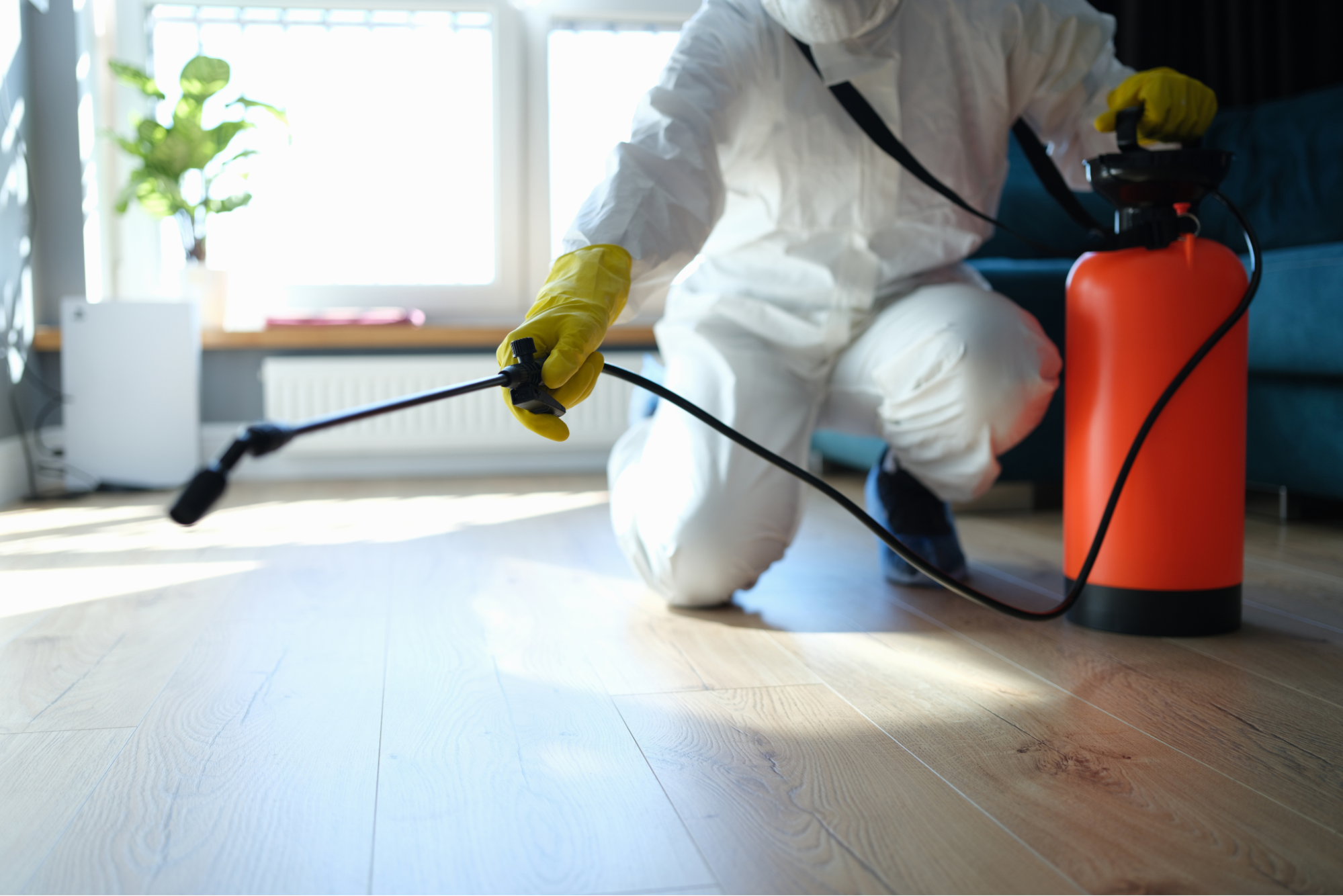Top Quality A1 Pest Control Services Charlotte - Shield Your Home
Top Quality A1 Pest Control Services Charlotte - Shield Your Home
Blog Article
Bed Pest Therapy Break Down: Contrasting Chemical Vs. Non-Chemical Solutions
In the realm of bug control, particularly when dealing with the relentless concern of bed pests, the choice between chemical and non-chemical therapy services can be a crucial one. Both methods provide distinct advantages and disadvantages, influencing factors such as efficiency, security factors to consider, and overall expense. By analyzing the nuanced information of each technique, a more clear understanding of which course to pursue in addressing a bed pest infestation can be obtained.
Effectiveness of Chemical Therapies
Chemical therapies for bed bug invasions have been widely acknowledged for their fast and potent effectiveness in eradicating these insects. When considering the effectiveness of chemical treatments, it is essential to recognize that they can provide a comprehensive and fast service to a bed bug problem.
Moreover, chemical treatments have the benefit of providing residual impacts, indicating that they can remain to remove bed bugs also after the initial application. This residual activity is especially helpful in combating any prospective re-infestations. Furthermore, the quick action of chemical treatments can bring alleviation to individuals dealing with extreme bed insect infestations, enabling them to reclaim control of their living areas promptly.
Safety Worries With Chemical Solutions
One vital element that requires mindful consideration when using chemical solutions for bed bug treatment is making certain the security of owners and the atmosphere. Exposure to specific chemicals used in bed insect therapies can lead to respiratory system issues, skin inflammation, or other damaging reactions, specifically in individuals with pre-existing conditions or sensitivities.
Moreover, the ecological effect of chemical services is one more significant consideration. Some chemicals utilized in bed pest treatments might be unsafe to beneficial insects, wildlife, and ecosystems if they leach into the soil or water supply. It is important to make use of chemical treatments deliberately, following safety and security standards, and considering less poisonous alternatives to reduce these threats and guarantee the reliable and safe monitoring of bed bug infestations.
Benefits of Non-Chemical Approaches
Thinking about the prospective security concerns and environmental effect connected with chemical remedies for bed insect treatment, checking out non-chemical techniques provides an appealing alternative with numerous unique advantages. Non-chemical therapies are eco pleasant, as they do not add to air or water air pollution, making them a sustainable choice for pest control.
Furthermore, non-chemical remedies can be effective in targeting bed pests, including hard-to-reach areas where chemical treatments may not pass through. Approaches such as warmth therapy, vacuuming, vapor cleansing, and bed mattress encasements supply complete obliteration without the use of harmful chemicals. Additionally, non-chemical techniques can be much less turbulent, requiring marginal preparation and enabling quicker reentry right into treated areas. Overall, deciding for non-chemical bed insect treatment methods not just prioritizes security and environmental management however also guarantees comprehensive and reliable parasite control.
Limitations of Non-Chemical Treatments

In addition, non-chemical therapies usually need multiple applications to accomplish successful obliteration. This can be lengthy and might not constantly assure complete elimination of all bed insects and their eggs, specifically in hard-to-reach or surprise places.
Moreover, the success of non-chemical treatments greatly relies upon correct implementation and thoroughness, which can be challenging for people without professional experience. Inadequate application of non-chemical methods may lead to incomplete termite control prices elimination, bring about consistent infestations and the requirement for additional treatments.
Therefore, while non-chemical therapies have their benefits, it is essential to acknowledge these limitations and consider them when identifying the most effective technique for taking care of bed bug infestations.
Cost Comparison: Chemical Vs. Non-Chemical Options
Given the constraints related to non-chemical therapies, an important element to review in the context of bed pest management is the expense comparison in between chemical and non-chemical alternatives. Chemical therapies commonly entail the application of pesticides by specialists, which can vary from $250 to $900 per area, depending on the intensity of the invasion and the dimension of the location to be dealt with. In contrast, non-chemical treatments like warmth therapy or heavy steam can be more expensive, with costs ranging from $1,000 to $6,000 for an entire home. While the initial expense of chemical therapies may appear reduced, several treatments might be called for to totally eradicate the infestation, possibly increasing the general expense. On the other hand, non-chemical alternatives may provide a more environment-friendly and sustainable remedy, although they can be cost-prohibitive for some individuals. Ultimately, when taking into consideration the price of bed bug treatment alternatives, it is necessary termite control prices to evaluate the in advance expenditures against the efficiency and lasting sustainability of the selected method.
Conclusion

Taking into consideration the possible security issues and environmental influence associated with chemical services for bed insect therapy, exploring non-chemical strategies provides an appealing choice with several distinct benefits.Offered the restrictions linked with non-chemical treatments, an essential element to review in the context of bed insect monitoring is the cost comparison in between chemical and non-chemical alternatives. In contrast, non-chemical therapies like warm treatment or heavy steam can be more pricey, with expenses ranging from $1,000 to $6,000 for an entire home. While the first expense of chemical treatments might seem lower, multiple treatments may be needed to totally eliminate the invasion, possibly increasing the general cost.In final thought, when comparing chemical and non-chemical bed bug therapy choices, it is vital to take into consideration performance, security, advantages, constraints, and price.
Report this page